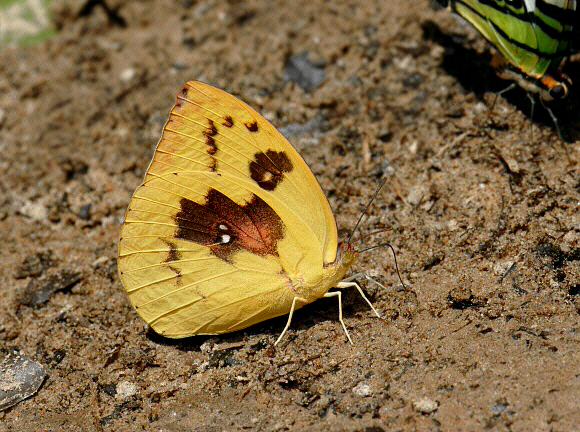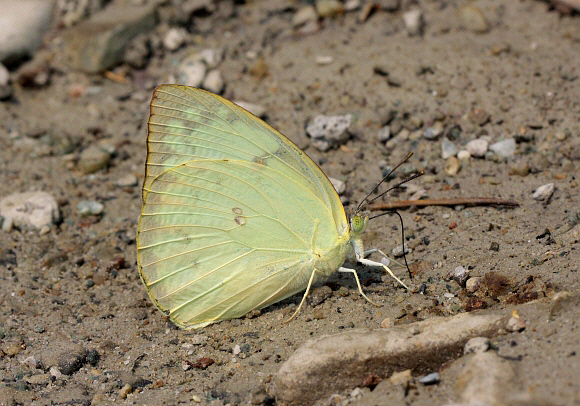
Introduction
There are 6 Catopsilia species: gorgophone from Australia, thauruma from Madagascar; pyranthe and scylla from the Oriental region; florella which is found across Africa and most of the Oriental region; and pomona, which is distributed from Sikkim to Malaysia, east to the Philippines and south through the islands of the South Pacific to Australia.
Early entomologists considered Catopsilia pomona and Catopsilia crocale to be separate species, but it is now scientifically proven that both are forms of the same subspecies – C. pomona pomona. There are in fact at least 6 different colour forms or ‘morphs’.
The various ‘pomona’ forms all have a pair of silvery spots on the underside, in the cell of the hind wing, and often have dark patches, these being most pronounced in f. catilla. On the upper surface the wings are whitish with a deep yellow flush in the basal area ( f. hilaria ), or plain creamy white in other pomona forms. The ‘crocale’ forms have wings that are unmarked on the underside. The uppersides of both forms have thin black apical borders in males, while females have a broad dark apical area within which are several pale squarish spots. The ‘crocale’ and ‘catilla’ forms are both widespread. The various colour forms are seasonal – caused by variations in day-length during the larval stage, but it is quite possible to see ‘catilla’ and ‘crocale’ side by side at certain times of year.

Habitats
This species is ubiquitous, being found throughout the year in open areas in secondary forest, along river courses, on open grassland, and even in deserts.
Lifecycle
The tall elliptical eggs are yellow and vertically ribbed. They are laid singly or in small batches on the foodplants.
The caterpillar when fully grown produces 2 morphs, one being yellowish green peppered with tiny black dots, and the other being pale yellowish brown. Both forms have a broad black stripe along the side, below which is a slightly narrower cream stripe. It feeds diurnally on many trees, shrubs and herbaceous plants in the Leguminosae (Fabaceae), favouring Cassia but also using Butea, Bauhinia, Pterocarpus, Senna and Sesbania.
The chrysalis is of the typical Pierid shape, pale green in colour, with a thin yellow line along the sides and a blue-green line along the back. It is attached by the cremaster and a silken girdle to the underside of a leaf, or to a stem.
Adult behaviour
The butterflies are strongly migratory in habit, and can be seen flying in undulating ‘strings’ of a dozen or so adults, travelling up and down the rivers which they use as migration corridors linking their high and low elevation breeding sites. During these migrations both sexes, but especially the males, can be observed congregating in large groups on sunlit riverbanks and sandbars where they settle for long periods to imbibe mineralised moisture. Both sexes also commonly visit flowers including Lantana, Jatropha and Catunaregam.
